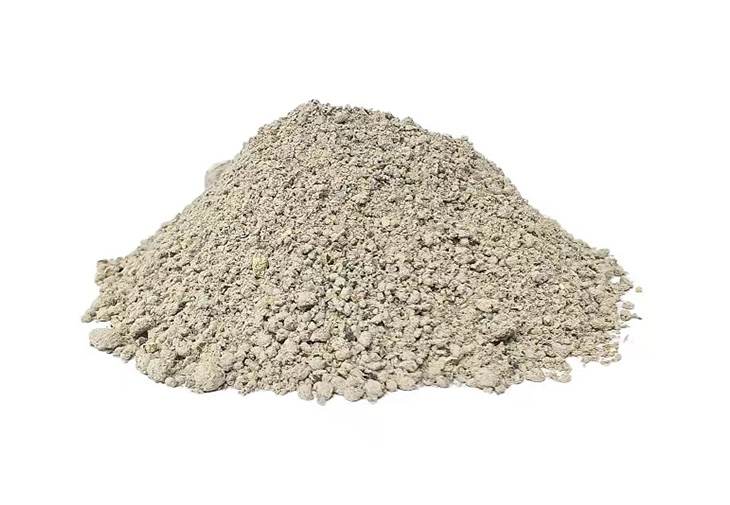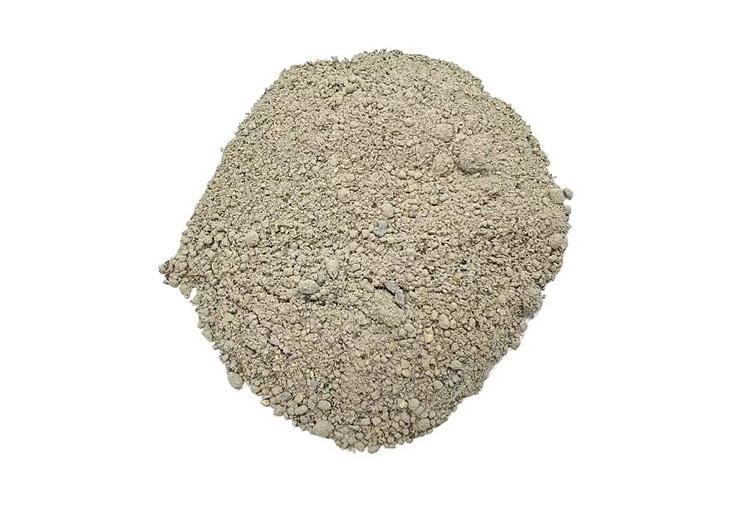



Used for insulation and heat preservation of the ladle walls in the operation of cast iron and cast steel, to prevent the cooling of molten iron (steel).
Highland’s Insulating Coating stands out in energy-saving and equipment protection with core strengths: it exhibits excellent thermal insulation efficiency, reducing heat loss of high-temperature equipment by 30-50% and lowering energy consumption for heating or cooling systems—critical for industries aiming to cut operational costs;
Utilizing advanced aerogel technology and specialized production processes, this material offers fast construction, rapid setting, high solidification strength, and excellent insulation properties.
The product is in a dry powder form with a long shelf life. Mix 50 kg of dry powder with 10 kg of mixed liquid and stir evenly during construction. The mixed material has a paste-like consistency. After cleaning the floating ash and adhered slag from the inner wall of the iron (steel) water package shell, apply the coating. Depending on the insulation requirements, the coating thickness should reach 10-20 mm. Apply from the bottom up, or invert the ladle and apply half of the package wall at a time. Once the coating layer shows some strength, flip the ladle and apply to the other half of the package wall.
1.It is recommended to use the opened insulation coating completely at one time.
2.Do not reuse mixed but unused coating; dispose of it directly.
3.After construction is complete, let the ladle stand at room temperature for at least 6 hours, then observe if the required strength has been achieved before proceeding with masonry work or castable pouring.
|
Item |
Index |
|||
|
Main Chemistry Component |
AI2O3 |
% |
≥10 |
1600 |
|
SiO2 |
≥60 |
±1.5 |
||
|
Bulk Density |
Natural accumulation |
g/cm3 |
≥1.0 |
≥10 |
|
After Molding |
≥1.45 |
≥25 |
||
|
Flexural Strength |
110℃×24h |
Mpa |
≥4.0 |
2.2 |
|
1100℃×3h |
≥4.5 |
65 |
||
|
Thermal Conductivity |
350±25℃ |
W/(m·k) |
≤0.32 |
|
Highland Refractory classifies Insulating Coating based on thermal insulation performance and application scenarios to meet diverse heat preservation needs, including High-Temperature Insulating Coating (suitable for equipment surfaces with operating temperatures up to 1200℃, such as boiler outer walls and industrial furnace exteriors) and Low-Temperature Insulating Coating (ideal for pipelines and storage tanks with temperatures ranging from -50℃ to 300℃, like chemical fluid transport pipes). There is also Waterproof Insulating Coating (added with moisture-proof additives), designed for outdoor equipment such as power plant chimneys and oil tank exteriors to resist rainwater erosion while maintaining insulation. Each type of Insulating Coating is formulated with lightweight insulating aggregates (e.g., ceramic microspheres, hollow glass beads) and high-adhesion binders, applied via brushing or spraying to form a thin, uniform layer that adheres firmly to various substrates—metal, concrete, or refractory—and effectively blocks heat transfer.
Highland’s Insulating Coating stands out in energy-saving and equipment protection with core strengths: it exhibits excellent thermal insulation efficiency, reducing heat loss of high-temperature equipment by 30-50% and lowering energy consumption for heating or cooling systems—critical for industries aiming to cut operational costs; it forms a thin, flexible layer (typical dry thickness 1-5mm), avoiding the bulkiness of traditional insulation materials (like ceramic fiber blankets) and saving installation space, especially for complex-shaped equipment such as curved pipelines; it also has strong weather resistance and corrosion resistance, withstanding UV radiation, rain, and chemical fumes without degradation, extending the service life of coated equipment by 2-3 years. These advantages make Insulating Coating a versatile, cost-effective solution for both industrial and commercial heat preservation needs.
Insulating Coating is widely used across sectors requiring efficient heat preservation or temperature control: in the power industry, it is coated on boiler water walls, steam pipelines, and turbine casings, minimizing heat dissipation and improving power generation efficiency; in the chemical industry, it serves as the insulation layer for reaction vessels, storage tanks, and fluid transport pipelines, maintaining stable internal temperatures of materials and preventing safety hazards caused by temperature fluctuations; in the construction industry, it is applied to industrial workshop walls and roof panels, reducing indoor temperature loss in winter and heat gain in summer to optimize working environments; in the food processing industry, it coats refrigeration equipment exteriors, preventing condensation and reducing energy consumption for cold storage. Each application leverages Insulating Coating’s ability to deliver efficient, space-saving thermal insulation for diverse equipment and structures.
Insulating Coating (Highland) excels in broad-spectrum thermal insulation for non-contact high-temperature or low-temperature surfaces, with its lightweight, thin-layer design and energy-saving focus making it ideal for equipment exteriors (boiler pipelines, chemical tanks) or outdoor structures where reducing heat loss/gain and saving space are priorities. Ladle Lining Coating, by contrast, specializes in targeted protection for molten metal-handling equipment interiors (steel ladles, tundishes), with its formulation optimized for resisting molten steel/slag erosion and maintaining molten metal temperature—prioritizing corrosion resistance and direct high-temperature stability over general insulation. Each product serves distinct needs: Insulating Coating dominates non-contact energy-saving insulation tasks, while Ladle Lining Coating leads in molten metal-contact scenarios requiring erosion resistance.
Highland Refractory is a trusted producer of high-quality Insulating Coating, backed by 30+ years of refractory and insulation expertise—we source high-purity lightweight aggregates and advanced functional additives, using precise mixing technologies to ensure consistent insulation performance and adhesion of each batch of Insulating Coating; every product undergoes strict quality testing, including thermal conductivity measurement, adhesion strength tests, and weather resistance evaluations, meeting ISO 9001/CE standards. With an annual production capacity of 60,000 tons and services for 1,500+ clients across Asia, Africa, Europe, and Australia, we also tailor formulations (e.g., adjusting insulation efficiency for specific temperature ranges or adding fire-retardant additives for high-risk areas) to match customer needs, ensuring our Insulating Coating delivers reliable energy-saving results.
Choosing Highland Refractory as your Insulating Coating manufacturer means accessing tailored solutions and comprehensive support: we offer customization (adjusting thermal conductivity, thickness, and functional additives to fit your equipment—e.g., high-temperature grades for boiler pipelines or waterproof grades for outdoor tanks), fast delivery (3–7 days for standard types in stock, 10–15 days for custom formulations), and bulk discounts (5–10% off orders ≥5 tons). We also provide free samples, detailed technical data sheets (including application methods and thermal insulation performance curves), and 24/7 technical guidance (advising on coating thickness based on equipment temperature), ensuring your Insulating Coating integrates seamlessly into projects and delivers long-term energy savings and equipment protection.
The stainless Tz series slag agglomerator is non-toxic and odorless, free of harmful components.
Sand mold sprue of cast steel and cast iron, sprue of molten mold casting, appearance...
Ceramic fiber board is a new type of refractory insulation material.
High alumina aggregates are widely used in different types of ceramics, enamels, glass, chemical and other factories for finishing and deep processing of thick and hard materials.